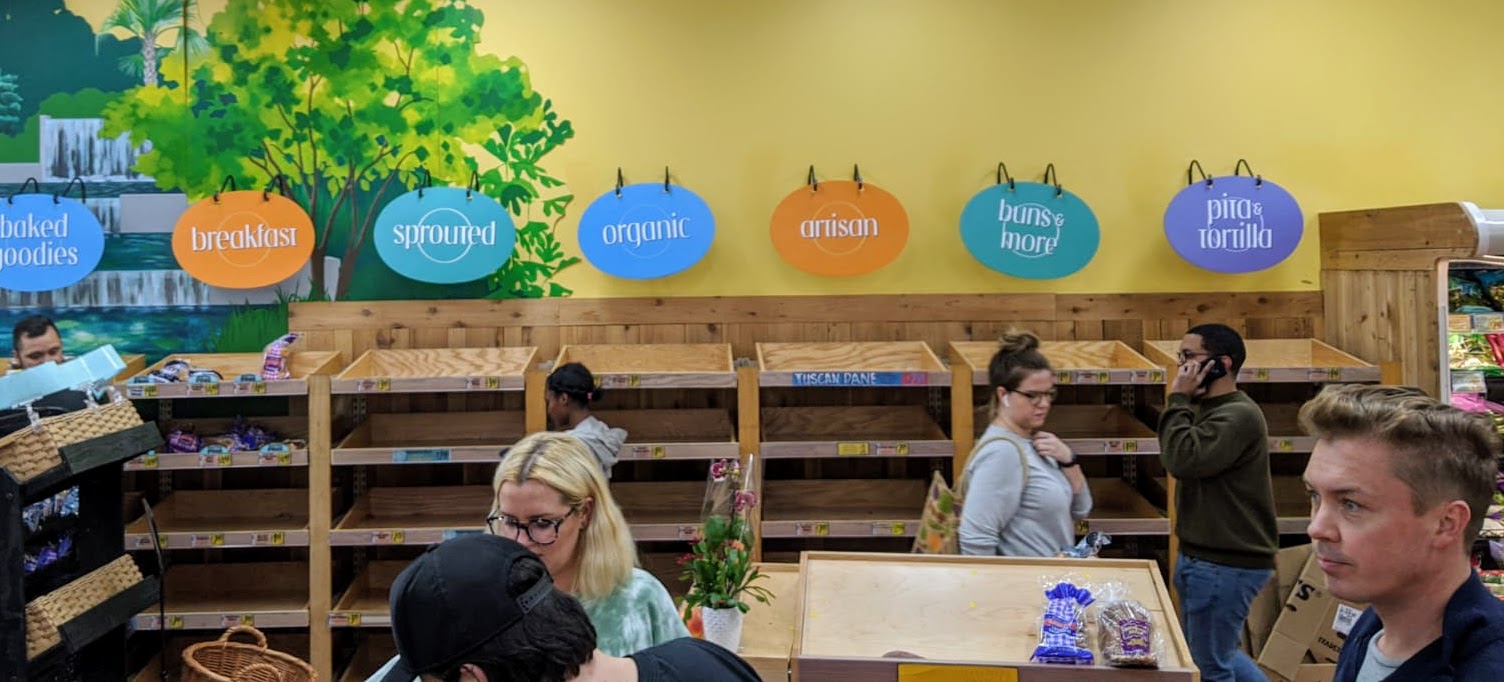Grocery retailers in the U.S. operate optimized supply chains to make products available to consumers. Let’s think a bit about the impact of short-term panic buying on these supply chains.

The current growing outbreak of COVID-19 disease and the spread of the novel coronavirus SARS-CoV-2 is leading to a number of effects that will require rapid and effective response by grocery and big-box retail firms. First, we have panic buying of foods and other household items. Second, we see growing demand for items that consumers use to combat the virus. Third,nwe are likely to see short and medium term changes to people’s activities that will increase the demand for preparing meals and eating at home. And fourth, we are likely to see growth in e-commerce demand as more people decide that home deliveries of general goods and groceries are safe and effective right now.
In this post, let’s focus on panic buying. Here, let’s define panic buying as consumer behavior leading to a temporary demand spike for products that normally have a very predictable, if not stationary, demand pattern. And when we refer to demand, we mean demand expressed directly by the end consumer making purchases that are reflected in point-of-sales systems.
In grocery retailing, many products have predictable demand patterns. While new products emerge over time, and while demand for some existing products changes significantly, usually these changes are gradual. Some products are highly seasonal, but the times of higher or lower demand repeat year-after-year (think: Superbowl Sunday or July 4th). In addition to being predictable, many products also exhibit stationary demand over long periods of time, and what we mean here is that average daily (or weekly) demand looks similar week-after-week. Goods like toilet paper and breakfast cereal typically have such demand patterns.
Grocery retail supply chains have been optimized to serve demand that is predictable. All major grocery retailers use sophisticated distribution centers (DCs) that intake pallets and cases of dry, fresh, and frozen goods from suppliers. Individual stores are then resupplied with both full pallets of bulky items and mixed pallets containing a few cases each of multiple smaller products. Grocery retailers operate private trucking carriers that provide delivery service between their DCs and their stores, and this is especially important for temperature-controlled shipments of fresh and frozen goods. Some other products are distributed to stores directly from supplier DCs (think: soft drinks) using trucks operated or contracted by the suppliers.
Here’s where things get interesting. Since demand is predictable and often stationary, most stores receive a similar number of pallets of goods weekly for resupply. This regularity also means that both distribution centers and the trucking services that connect DCs to stores can be planned to balance workload across a week. Balanced workload allows the retailer to get higher utilization from its DCs and their equipment and staff and higher utilization from its trucking operations. The material handling equipment inside the DC, the staffing level, the number of loading docks, etc, have all been selected to meet balanced demand over time. The best grocery retailers balance workload and utilize capacity really well and can offer lower prices than competitors due to their lean and low-cost supply chain operation.
Sharp increases in demand due to panic buying create challenges for supply chains that have been designed for balanced workload and high utilization. Since there is not much capacity in reserve (which would be wasteful and costly when demand is smooth and predictable), it can take some time for stores to return to normal inventory levels after panic buying episodes. It’s also important for both store managers and grocery chain buyers not to interpret panic buying demand spikes as true signals of changing demand, or to use automated ordering systems that do so. Misinterpreting a demand signal and placing a larger-than-needed resupply order can initiate the well-known bullwhip effect where larger-than-needed orders percolate up the supply chain and lead to boom-and-bust inventory levels.
The good news is that panic buying tends to be short-lasted. When consumers hoard products and create larger-than-needed inventories at home, they tend to consume their way through those inventories at the usual rate. Thus, consumers don’t need to “resupply themselves” for a longer period of time, and this allows inventory to rebuild back to normal levels at retail stores over the course of a few days or weeks. So when panic buying occurs, try to avoid the temptation to join the frenzy!